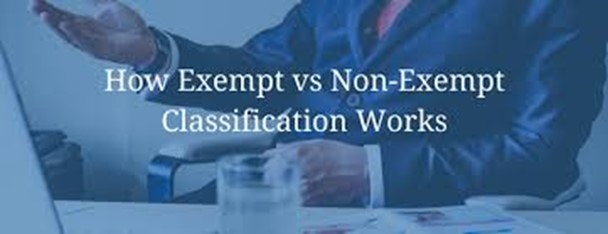
When you pay your employees, you must classify them correctly as exempt or non-exempt from overtime. Unfortunately, it's not as simple as deciding to make them hourly or salaried. And if you get this wrong, you, your family, and your business can be in danger.
By Larry Kagan, Founder & CEO, Baron Payroll
You hire an employee, and you decide you don't want to pay them overtime, so you offer them a salaried position instead of paying them hourly.
You think this works better for your business: You can ease up on timekeeping, get the work done that you need. And the amount you pay your employee is predictable and always the same.
But not so fast: This isn't how you correctly classify employees, and it could end up costing you big time in the long run.
NY Wage & Hour Laws dictate who receives overtime and who doesn't
The terms people often use are hourly and salaried, and there's a belief that salaried workers don't have to be paid overtime. But, unfortunately, that's not the case.
The terms you need to know to understand who can get overtime are exempt and non-exempt. And these classifications aren't just about hourly rates vs. salaried jobs.
An employee either meets New York's qualifications not to be required to receive overtime pay, or they don't and must receive overtime pay.
State and federal laws dictate whether an employee is exempt from overtime. In this case, since New York State's requirements are more stringent than the federal laws, the NY laws are the ones employers New York employers must follow.
An employee must first meet or exceed a certain level of pay to be considered exempt. And second, they then must fall into specific categories of workers who can be exempt from overtime.
How to classify employees correctly
To correctly classify an employee in NY, you need to consider how much they earn and the type of work they do.
First, an employee must meet or exceed the financial threshold required by New York State. If they don't meet the pay threshold, they are not exempt from and must be paid for overtime.
If they meet the income threshold, then there is a second test. They must be a specific kind of worker with certain types of duties that fall into various categories of exemptions.
Many of these exemptions include work that exercises independent judgment, where an employee makes important decisions that impact the company. Specific exemptions include executive, administrative, professional, outside sales, and other skilled-work positions.
Even if it includes the words used in the exemptions, an employee's title isn't as important as the actual work they do. Their job duties dictate whether they should be considered exempt.
Generally, if a person works with their hands, they likely are entitled to overtime.
Exempt vs. Non-Exempt – what does it really mean?
The terms exempt and non-exempt refer to an employee's ability to get paid for overtime, which in New York is any time worked beyond 40 hours per week.
If an employee who is not exempt from overtime works more than 40 hours per week, they receive time-and-a-half pay for their overtime hours.
Overtime pay is not optional. Employees can't waive their right to receive it; otherwise, employers would only hire those who said they didn't want to be paid overtime.
The bottom line is: your classification of an employee as salaried may not line up with the requirements of a salaried worker, either because of their level of pay or the type of work they do.
That would mean you were shorting an employee on overtime pay you were legally required to pay them, which puts you in serious legal jeopardy.
What happens if I misclassify my employees?
Knowing how to correctly classify an employee saves you money in the long run. If you classify incorrectly, you could end up facing a lawsuit, investigation, or worse. Not just for unpaid overtime, but fines, damages, and legal fees as well.
And it's often not just one employee you would have to pay back wages to. If the Department of Labor starts an investigation, it will likely include all employees.
A concept called "double liquidated damages" may also apply, which means an employee gets double the amount you owe them in backpay.
It can be a huge financial hit, as well as a reputational one.
Even if the company shuts down and you close your bank accounts, an employer will be held personally liable, putting their personal assets in danger.
How Baron can help
We're not the payroll police. But it is our job to tell you all the applicable laws and the dangers of not properly following them.
In this case, the dangers can be significant. And the way to avoid this kind of pitfall is straightforward.
Nine times out of ten, we can reverse-engineer your payroll to ensure that you're still paying an employee the same amount per week, but that they are properly classified.
We can figure out the proper hourly rate to pay them, including any overtime pay, if they are non-exempt.
You change how the employee's pay statement looks and show hours worked with an hourly pay rate instead of just a salary. With the proper guidance, it can be a simple fix.

